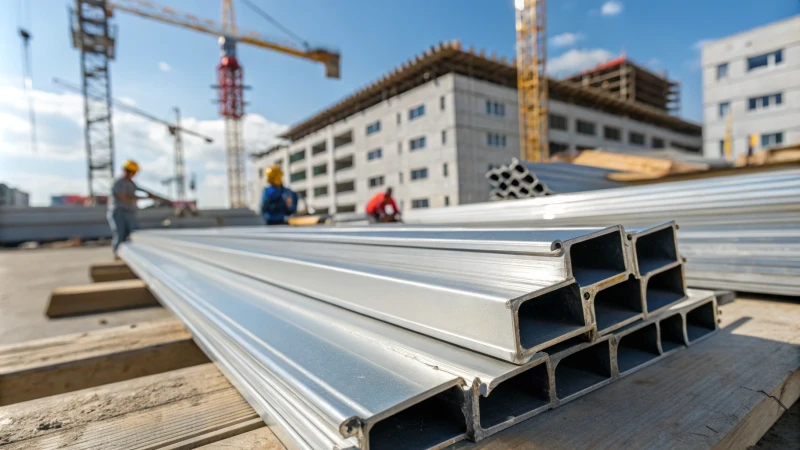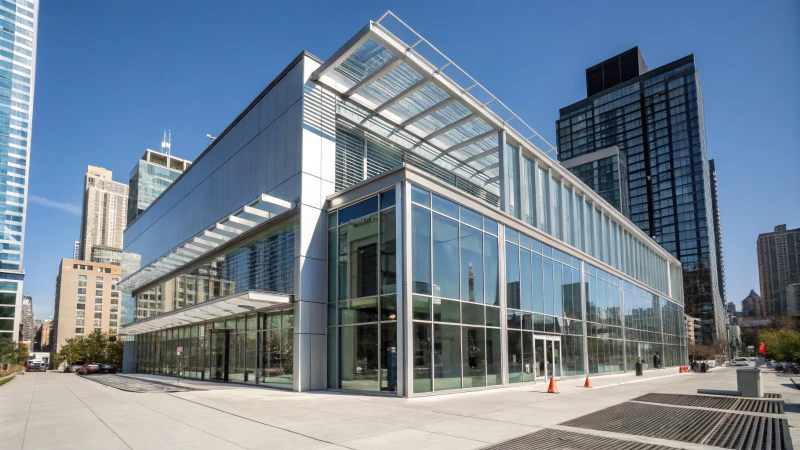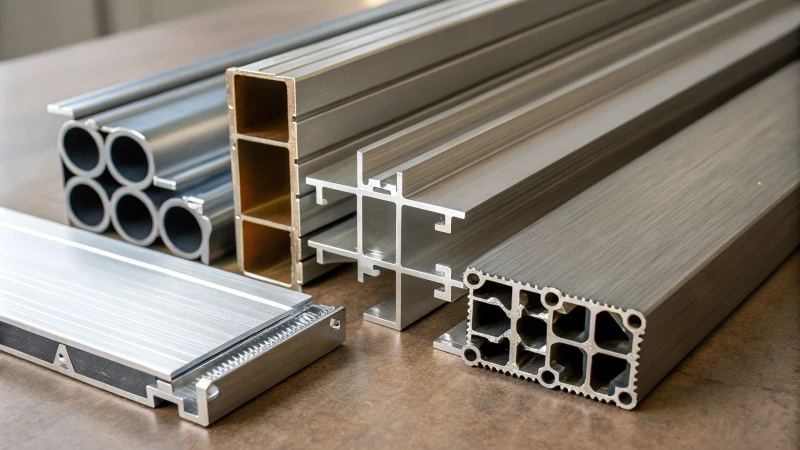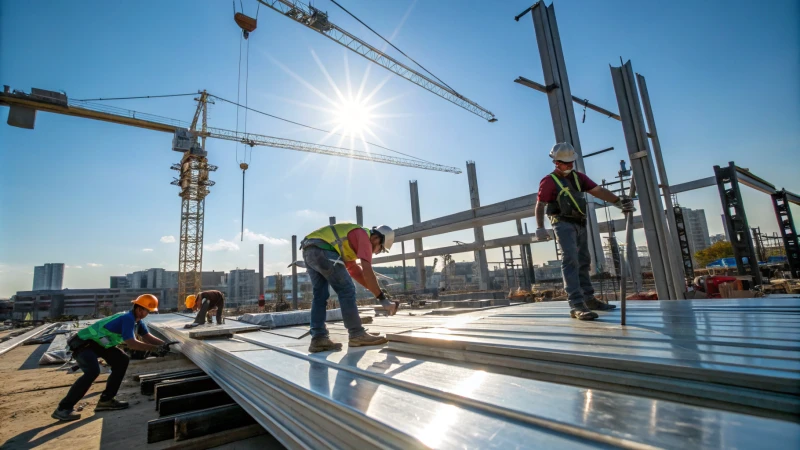How aluminium profiles meet the requirements of earthquake-resistant buildings?

Earthquake-resistant construction demands materials that can withstand dynamic forces while maintaining structural integrity. Enter aluminum profiles, a game-changer in modern architecture.
Aluminum profiles meet earthquake-resistant building requirements through their lightweight, strong, and flexible properties, which enhance structural resilience and safety during seismic events.
While the immediate benefits of aluminum profiles are clear, delving deeper reveals how their design and manufacturing processes further contribute to seismic safety. Join us as we explore the intricate details that make aluminum profiles a preferred choice in earthquake-resistant construction.
Aluminum profiles are heavier than steel.False
Aluminum is lighter than steel, making it ideal for seismic resilience.
Aluminum profiles enhance seismic safety through flexibility.True
Their flexible nature allows structures to absorb and dissipate seismic energy.
What Are the Key Seismic Performance Criteria for Aluminum Profiles?
Aluminum profiles play a crucial role in construction, especially in earthquake-prone areas. Discover the seismic performance criteria that ensure their effectiveness and safety during seismic events.
The key seismic performance criteria for aluminum profiles include flexibility, tensile strength, and fatigue resistance. These factors ensure aluminum structures withstand dynamic forces during earthquakes, maintaining structural integrity and safety.
Flexibility and Strength in Design
Aluminum profiles must balance flexibility with structural strength1. Flexibility allows them to absorb and distribute seismic energy without breaking, while strength ensures they maintain form.
Critical Factors:
- Material Composition: Proper alloy selection enhances both flexibility and strength.
- Design Considerations: Incorporating features like expansion joints enhances adaptability.
Tensile Strength and Fatigue Resistance
Tensile strength is vital to prevent cracks under stress. Aluminum profiles should undergo extrusion processes2 that improve these characteristics. Fatigue resistance ensures longevity and durability.
| Property | Importance |
|---|---|
| Tensile Strength | Prevents cracking and failure |
| Fatigue Resistance | Ensures durability over time |
Compliance with Seismic Standards
Profiles should meet global standards like those set by the International Building Code3. These guidelines dictate the minimum requirements for seismic design, ensuring safety.
- Codes & Regulations: Stay updated with the latest seismic codes4.
- Testing and Certification: Regular testing is essential to verify compliance.
Practical Applications in Construction
From high-rise buildings to bridges, aluminum profiles are integral to modern infrastructure5. They are valued for their lightweight nature which reduces seismic load.
Use Cases:
- High-Rise Buildings: Utilized in curtain walls and structural frames.
- Bridges: Essential for expansion joints, allowing movement without damage.
The unique properties of aluminum make it an excellent choice for structures in seismic zones. Their ability to combine strength with flexibility ensures they can protect lives and property effectively during earthquakes.
Aluminum profiles must balance flexibility with strength.True
Flexibility and strength are critical for seismic performance of aluminum.
Tensile strength prevents aluminum profiles from cracking.True
Tensile strength is crucial to avoid cracks under seismic stress.
How Are Aluminum Profiles Used in Modern Seismic-Resistant Architecture?
Aluminum profiles play a crucial role in seismic-resistant architecture due to their lightweight yet strong properties, allowing structures to absorb and withstand earthquake forces efficiently. This balance between strength and flexibility makes them ideal for modern architectural designs.
Aluminum profiles are utilized in seismic-resistant architecture by providing structural flexibility and strength, essential for withstanding earthquake forces. Their lightweight nature reduces building mass, minimizing seismic loads and enhancing safety.

Seismic Performance Requirements for Aluminum Profiles
In seismic-resistant architecture, materials must endure lateral forces and vibrations. Aluminum profiles meet these requirements6 through their inherent flexibility and strength. Their lightweight nature allows structures to sway without collapsing during seismic events.
Practical Applications in Seismic Structures
Aluminum profiles are integral to high-rise buildings and bridges. These structures benefit from reduced mass, decreasing seismic loads and enhancing stability. Expansion joints7 in buildings use aluminum for their ability to flex under stress.
| Structure Type | Role of Aluminum Profiles |
|---|---|
| High-rise Buildings | Reduce mass, enhance flexibility |
| Bridges | Minimize load, improve resilience |
| Expansion Joints | Allow movement, prevent damage |
Enhancing Strength Through Extrusion Processes
Manufacturers use advanced extrusion techniques to improve the mechanical properties of aluminum profiles. By altering temperature and speed, they enhance tensile strength and fatigue resistance, ensuring profiles can endure dynamic seismic forces. Extrusion parameters8 are crucial to achieving desired qualities.
Market Demand for Seismic Construction Materials
The demand for aluminum profiles is rising with increased awareness of earthquake safety. Builders seek materials that combine safety with sustainability. Aluminum’s corrosion resistance and light weight make it attractive for modern seismic designs9.
These aspects highlight the diverse applications of aluminum profiles in seismic architecture, showcasing their importance in enhancing building resilience and safety during earthquakes.
Aluminum profiles enhance seismic resilience in high-rises.True
Aluminum's lightweight and flexible properties reduce mass and increase sway tolerance.
Extrusion processes weaken aluminum's seismic performance.False
Extrusion techniques actually improve tensile strength and fatigue resistance.
What Extrusion Techniques Enhance the Strength of Aluminum Profiles?
Unlocking the potential of aluminum profiles relies heavily on mastering advanced extrusion techniques. Discover how these methods amplify strength and durability, making them ideal for demanding applications.
Extrusion techniques such as controlled cooling, heat treatment, and alloy selection enhance the strength of aluminum profiles. These processes refine the microstructure, improving tensile strength and resistance to fatigue.

The Role of Controlled Cooling
Controlled cooling is critical in enhancing the strength of aluminum profiles. By carefully managing the rate at which the material cools, manufacturers can influence the microstructure of the aluminum, resulting
in improved mechanical properties. Rapid cooling, also known as quenching, prevents the formation of coarse precipitates that can weaken the profile.
| Cooling Rate | Impact on Strength |
|---|---|
| Rapid | Increases tensile strength |
| Moderate | Balances strength and ductility |
| Slow | May lead to reduced strength |
For further insights into quenching and cooling10, explore how these techniques optimize mechanical properties.
Heat Treatment Techniques
Heat treatment processes such as aging and annealing are pivotal in strengthening aluminum profiles. Aging involves heating the extruded profiles to allow precipitates to form in a controlled manner, enhancing
hardness and strength. On the other hand, annealing softens the material, making it more workable for subsequent forming operations.
Understanding the effects of aging on aluminum11 can illuminate how this process contributes to profile strength.
Alloy Selection and Composition
Choosing the right alloy composition is another fundamental technique in extrusion. Different aluminum alloys offer varying strengths and resistances to environmental factors. For instance, 6000 series alloys are popular
for their excellent balance of strength, corrosion resistance, and workability. The addition of elements such as magnesium and silicon enhances these properties further.
| Alloy Series | Key Properties |
|---|---|
| 6000 | Good strength and corrosion resistance |
| 7000 | Very high strength, less corrosion resistance |
Researching the properties of 6000 series alloys12 helps in selecting the optimal material for specific applications.
Extrusion Speed and Die Design
The speed of extrusion and the design of the extrusion die significantly impact the final profile’s strength. Slower extrusion speeds typically result in better quality profiles with fewer defects. Similarly,
die design influences how evenly material flows during extrusion, affecting the uniformity and consistency of the profile.
Gain insights into how die design affects extrusion13 to understand its role in enhancing profile performance.
By combining these techniques, manufacturers can tailor aluminum profiles to meet specific demands, ensuring they perform reliably under diverse conditions.
Rapid cooling increases aluminum tensile strength.True
Rapid cooling prevents coarse precipitates, enhancing tensile strength.
Annealing strengthens aluminum profiles.False
Annealing softens aluminum, making it more workable, not stronger.
Why Is There a Growing Demand for Aluminum Profiles in Seismic Construction?
The rising demand for aluminum profiles in seismic construction is driven by their unique properties that enhance building resilience during earthquakes. These materials provide safety and sustainability, crucial in today’s construction landscape.
Aluminum profiles are increasingly favored in seismic construction due to their lightweight, strength, and flexibility. These properties help withstand seismic forces while reducing overall building mass, thus enhancing safety and structural integrity.

Seismic Performance Requirements
Aluminum profiles must meet specific seismic performance14 criteria to ensure safety. They need to withstand lateral forces without compromising the building’s integrity. Their lightweight nature allows for greater flexibility and reduced seismic loads.
| Material Properties | Benefits |
|---|---|
| Lightweight | Reduces seismic load |
| Flexible | Enhances structural safety |
| Strong | Withstands lateral forces |
Practical Applications
In seismic construction, aluminum profiles are commonly used in high-rise buildings and bridges. Their lightweight nature15 helps decrease the overall building mass, minimizing seismic impacts. They are integral in expansion joints, providing flexibility and resilience during earthquakes.
Enhanced Strength through Extrusion
Advanced extrusion techniques significantly improve the strength of aluminum profiles. By modifying parameters like temperature and speed, manufacturers enhance the mechanical properties, resulting in profiles with higher tensile strength and better fatigue resistance, crucial for enduring seismic forces.
Market Demand Analysis
The demand for aluminum profiles is rising due to increased awareness of earthquake safety and evolving building regulations. Builders seek materials that ensure safety and comply with modern seismic design standards. The corrosion-resistant properties of aluminum make it an attractive option in seismically active zones.
For an overview of market trends:
| Factor | Impact on Demand |
|---|---|
| Earthquake Awareness | Increased demand |
| Building Regulations | Compliance necessity |
| Urban Development | More seismic structures |
The growing market reflects the need for materials that offer both safety and sustainability, positioning aluminum profiles as a vital component in modern construction strategies aiming at resilience against earthquakes. Explore more16 to understand how these materials integrate into architectural designs aimed at enhancing safety and durability.
Aluminum profiles reduce seismic loads in buildings.True
Their lightweight nature decreases building mass, reducing seismic impact.
Aluminum profiles are unsuitable for high-rise buildings.False
They are commonly used in high-rise buildings due to their flexibility and strength.
Conclusion
Aluminum profiles enhance earthquake-resistant buildings through their lightweight, strong, and flexible properties, ensuring structural integrity and safety during seismic events while meeting stringent performance criteria.
-
Explore how structural strength and flexibility in aluminum profiles contribute to resilience against seismic forces. ↩
-
Learn about advanced extrusion techniques that enhance the tensile strength of aluminum profiles. ↩
-
Understand the seismic standards outlined by the International Building Code for construction safety. ↩
-
Stay informed about the newest updates in seismic building codes for construction projects. ↩
-
Discover how aluminum profiles are used in modern infrastructure projects worldwide. ↩
-
Explore how aluminum profiles meet seismic performance standards to ensure building safety. ↩
-
Learn about the benefits of using aluminum in expansion joints for seismic flexibility. ↩
-
Discover how extrusion processes enhance the strength and durability of aluminum profiles. ↩
-
Understand why aluminum is favored in designing earthquake-resistant buildings. ↩
-
Explore how controlled cooling, particularly quenching, optimizes mechanical properties of aluminum profiles. ↩
-
Learn about the effects of aging on aluminum profiles to understand its contribution to strength. ↩
-
Discover why 6000 series alloys are favored for their strength and corrosion resistance. ↩
-
Understand how die design influences material flow and profile quality. ↩
-
Discover detailed information on how aluminum profiles meet seismic performance criteria, ensuring safety and integrity in construction. ↩
-
Learn about the benefits of using lightweight aluminum profiles in construction to reduce seismic impacts. ↩
-
Gain insights into how aluminum profiles are utilized in modern architectural designs for enhanced safety and durability. ↩




